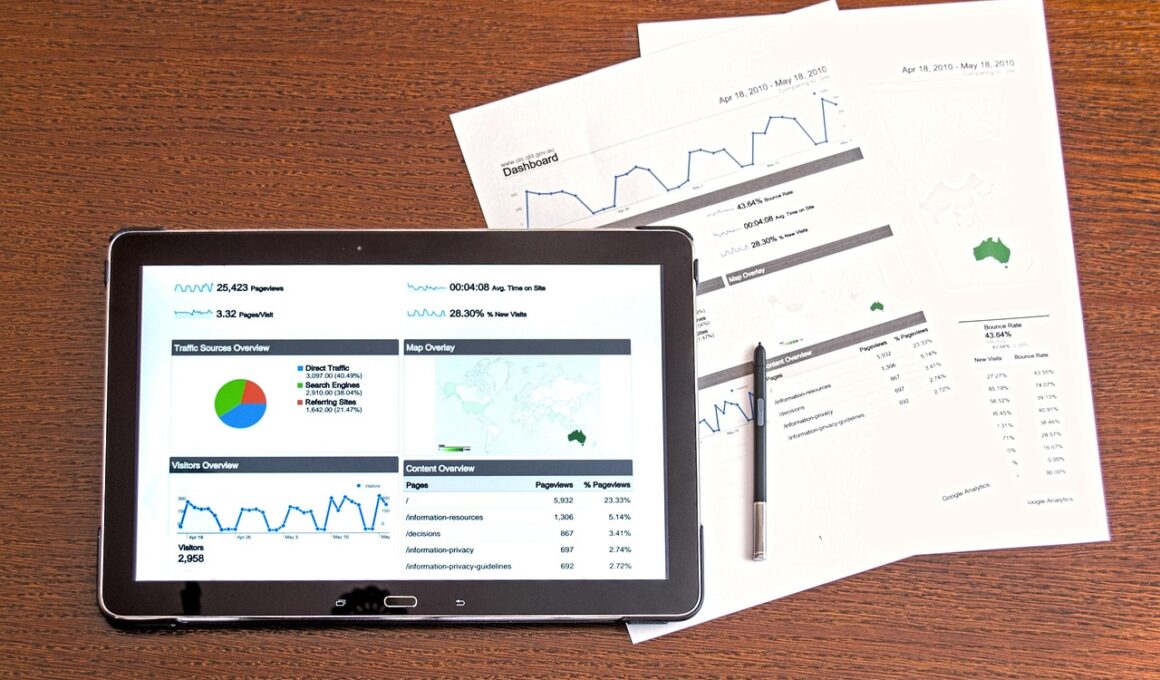Using Analytics to Improve Time Management in Business Leadership
Effective time management is crucial for business leaders who seek to enhance productivity and efficiency within their organizations. With the rapid advancements in technology, analytics has emerged as a powerful tool to optimize time management strategies. By analyzing data, leaders can uncover trends and patterns that impact how time is allocated. For instance, leaders can utilize analytics to assess employee performance over time, identify bottlenecks, and streamline work processes. Additionally, analytics can offer insights into the operational activities that consume the most time, allowing leaders to adjust priorities accordingly. Leaders can create customized dashboards that consolidate time metrics for different teams, enabling them to visualize performance in real-time. Furthermore, decision-making becomes data-driven, reducing the reliance on intuition. As business leaders embrace analytics, they unlock the potential to refine their time management strategies, leading to improved outcomes. Ultimately, leveraging analytics not only leads to better time allocation but also fosters a culture of accountability and transparency within the organization. Thus, analytics transforms time management from a challenge into a strategic advantage for business leaders striving for excellence.
One significant area where analytics can enhance time management is through task delegation. By analyzing individual team members’ strengths and weaknesses, leaders can assign tasks that match an employee’s skill set. This targeted approach ensures that everyone’s time is used effectively, maximizing overall productivity. Tools such as project management software equipped with analytics functionalities help visualize team workloads and highlight areas where additional help is needed. Additionally, through continuous monitoring, leaders can adjust teams or resources in response to real-time needs. Establishing clear metrics for performance further leverages analytics to assess how well time is spent on tasks. Data-driven performance evaluations can help identify training opportunities, leading to professional development. Moreover, by keeping track of time spent on various tasks, business leaders can evaluate task efficacy, ensuring that time spent translates into value. An effective method involves using key performance indicators (KPIs) that evolve based on data insights, allowing organizations to maintain a flexible and responsive time management approach. Integrating analytics into the organizational culture facilitates proactive time management, ensuring that leaders stay ahead of challenges.
The Role of Technology in Time Management
In today’s fast-paced business environment, technology plays an essential role in aiding leaders with time management. Various technological tools and applications offer features that track time usage, automate repetitive tasks, and provide reminders for deadlines. For instance, calendar management applications can synchronize activities, allowing leaders to visualize their schedules effectively. Furthermore, integrating task automation solutions frees up time for more strategic thinking and planning. Business leaders can focus on critical decision-making while routine tasks are handled automatically. Communication platforms equipped with analytics can also provide insights on collaboration patterns and meeting durations, enabling leaders to evaluate the effectiveness of their interactions. Using such tools not only increases individual productivity but also enhances collaboration among team members. Moreover, leaders can receive regular updates and reports on time spent across various projects, presenting a comprehensive overview of how resources are allocated. This level of awareness allows for informed adjustments to time management strategies. Therefore, leveraging technology streamlines operations, helping leaders maximize efficiency while minimizing wasted time.
Analytics also provides valuable insights into meeting effectiveness, a common time drain for many organizations. By evaluating meeting data, leaders can analyze criteria such as duration, frequency, and participation levels to determine whether meetings are truly necessary. Studies show that unproductive meetings cost businesses billions annually; hence, optimizing this aspect can yield significant time savings. Implementing a culture of accountability for meetings while encouraging the use of analytics allows leaders to establish guidelines for effective communication. Techniques such as sending out pre-meeting surveys and analyzing post-meeting feedback ensures meetings remain purposeful and results-driven. Additionally, leaders can explore alternative communication methods, like emails or collaborative platforms, to replace unnecessarily lengthy meetings. By decreasing the frequency of meetings and improving their quality, teams can devote more time to meaningful work. Enabling teams to utilize analytics in assessing the productivity of their interactions empowers them to take ownership of their time. As a result, organizations can minimize distractions and enhance overall productivity through informed meeting management.
Measuring Success in Time Management
For business leaders, measuring success in time management involves tracking quantifiable outcomes from implemented strategies. Through analytics, leaders can evaluate productivity metrics across the organization and assess how well time is being managed. For instance, tracking project completion rates, time spent on tasks, and employee satisfaction can provide comprehensive insights into the effectiveness of time management processes. Leaders can compare internal benchmarks data over various periods to identify areas of improvement or challenges faced by specific teams. Additionally, integrating employee feedback through surveys and one-on-one discussions offers qualitative data that can enrich quantitative findings. Furthermore, recognizing and celebrating achievements encourages a time-efficient culture, motivating employees to adopt best practices in time management. Leaders can develop performance dashboards that highlight progress, determining which strategies yield the best results. Establishing clear goals and summarizing key insights from analytics ensures all team members understand the importance of efficient time management. This practice not only keeps teams focused on their objectives but also fosters a collaborative environment dedicated to continuous improvement.
As organizations shift towards a more data-driven approach, business leaders must advocate for an analytical mindset within their teams. Educating employees about the significance of time management and how analytics can help drive decisions enhances engagement. Training employees in using analytical tools equips them with skills to assess their productivity and how time is spent on various activities. Workshops and seminars showcasing success stories can motivate employees to adopt an analytics-driven approach. Leaders should create an open dialogue around results, fostering a culture of shared responsibility regarding time management. As employees become adept at utilizing analytics, they can identify personal inefficiencies and contribute solutions. Moreover, establishing regular check-ins can further support an ongoing dialogue about improving time management strategies. Leaders can act as role models, demonstrating the importance of using analytics for task prioritization and decision-making. By nurturing this environment, organizations position themselves to reap the full benefits of analytical insights, transforming their time management processes into an effective strategy for enhanced productivity.
Conclusion
In summary, utilizing analytics to support time management in business leadership is not just beneficial; it is essential. Business leaders who embrace data-driven decision-making equip themselves and their teams with vital insights that enhance organizational efficiency. From task delegation to meeting effectiveness, analytics offers actionable strategies that can transform how time is managed across the organization. By leveraging available technological tools and fostering a culture of accountability, leaders can refine their approaches to time management. Regular evaluation of performance, combined with employee engagement, ensures a collaborative environment of continuous improvement. As analytics becomes an integral part of management strategies, it enables leaders to respond dynamically to challenges while steering their organizations toward success. In a world where time is invaluable, those who can effectively manage it will consistently stand out as leaders in their fields. Therefore, cultivating a data-centric mindset is crucial in today’s fast-paced business environment for driving results and ensuring sustained competitiveness.
Ultimately, the journey towards improving time management through analytics is ongoing. As leaders adapt to new technologies and methodologies, they can achieve significant improvements in the way their teams work and collaborate. It’s a continuous cycle of assessment and adjustment that leads to remarkable outcomes. Embracing analytics as a foundational aspect of time management ultimately empowers organizations to increase productivity, satisfaction, and performance. As leaders commit to leveraging analytics consistently, they position their organizations to thrive in an increasingly competitive world, making analytics an essential tool for success in business leadership.


